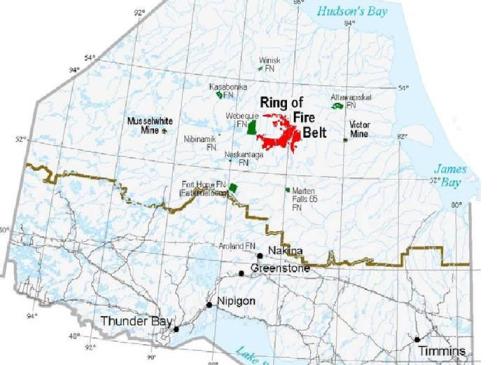The Globe and Mail is Canada’s national newspaper with the second largest broadsheet circulation in the country. It has enormous influence on Canada’s political and business elite.
Following the lead of many chiefs who demanded the AFN take a more assertive role,
the AFN passed a resolution calling for the eviction of mining companies in Northern
Ontario’s Ring of Fire.”We’re being bullied by a giant mining company and a
desperate province,” Chris Moonias, a band councillor from the Neskantaga First
Nation, told the assembled chiefs.
With natives feeling ignored on key treaty rights, Shawn Atleo, the newly re-elected Chief of the Assembly of First Nations, says the advocacy organization will take the conversation directly to businesses on resource development. At the same time, he didn’t rule out delaying key projects like the Northern Gateway pipeline.
“The chiefs are standing together and saying if you do not deal with the recognition of our title rights, it will not result in more efficient development,” he said the day after he was re-elected to a three-year term as national chief of Canada’s largest aboriginal organization.
With billions of dollars at stake in projects like the Northern Gateway pipeline and mines in Northern Ontario, Canadian business leaders have urged politicians to give aboriginal communities a larger role in the development of Canada’s energy industry.

























